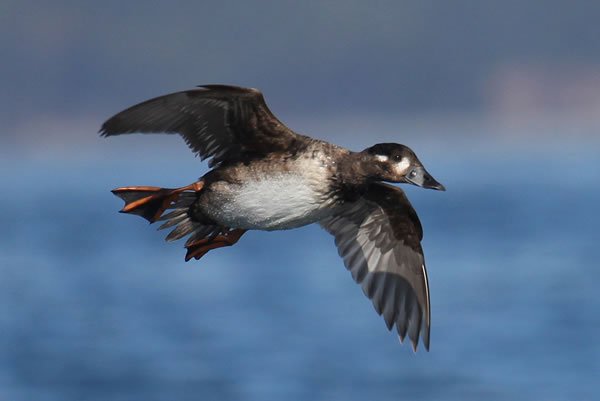Lead Institution(s): USGS-Patuxent Wildlife Research Center
Project Lead: Alicia Wells-Berlin
Collaborator(s): Matthew Perry (USGS), University of Maryland, Friends of Patuxent Wildlife Research Center
Focal Species: Surf Scoter (Melanitta perspicillata)
Project Description: Reports of the Atlantic coast surf scoter populations have indicated steady declines, which has necessitated further research on surf scoter populations. One of the primary wintering areas for surf scoters is the Chesapeake Bay. While wintering in the Bay the ducks primarily prey on two food items, the hooked mussel (Ischadium recurvum) and dwarf surf clam (Mulinia lateralis). Over the last 50 years, the habitat quality for these prey items has undergone drastic changes. The decline in oyster reefs and the resultant decline in availability of high quality mussels may be causing the surf scoters to switch to a more prolific food item, the dwarf surf clam. Our study will quantify the foraging values (costs-benefits) of these two prey items for surf scoters to evaluate the effects of this possible shift on the foraging energetics of this declining duck population. The objectives of this study were: 1) to determine the comparative nutrient composition of these prey items; 2) to evaluate the energy assimilated by surf scoters from these prey items; 3) to determine the functional responses of scoters foraging on four different ecologically relevant densities (30, 100, 1000, and 3000 m-2) of each prey item; and 4) to model the foraging value (costs – benefits) of both prey items for surf scoters.
SDJV89 Interim Report FY07
Publications
Berlin, A.M. 2008. Foraging values of Mulinia lateralis and Ischadium recurvum: Energetic effects of surf scoters wintering in the Chesapeake Bay. Ph.D. Dissertation. University of Maryland. College Park, MD. 150p. https://www.proquest.com/openview/334317d6bc20b0f1337ae7868c8db634/1?cbl=18750&pq-origsite=gscholar
Wells-Berlin AM, Perry MC, Kohn RA, Paynter KT Jr, Ottinger MA. 2015. Composition, Shell Strength, and Metabolizable Energy of Mulinia lateralis and Ischadium recurvum as Food for Wintering Surf Scoters (Melanitta perspicillata). PLoS ONE 10(5): e0119839. https://doi.org/10.1371/journal.pone.0119839
